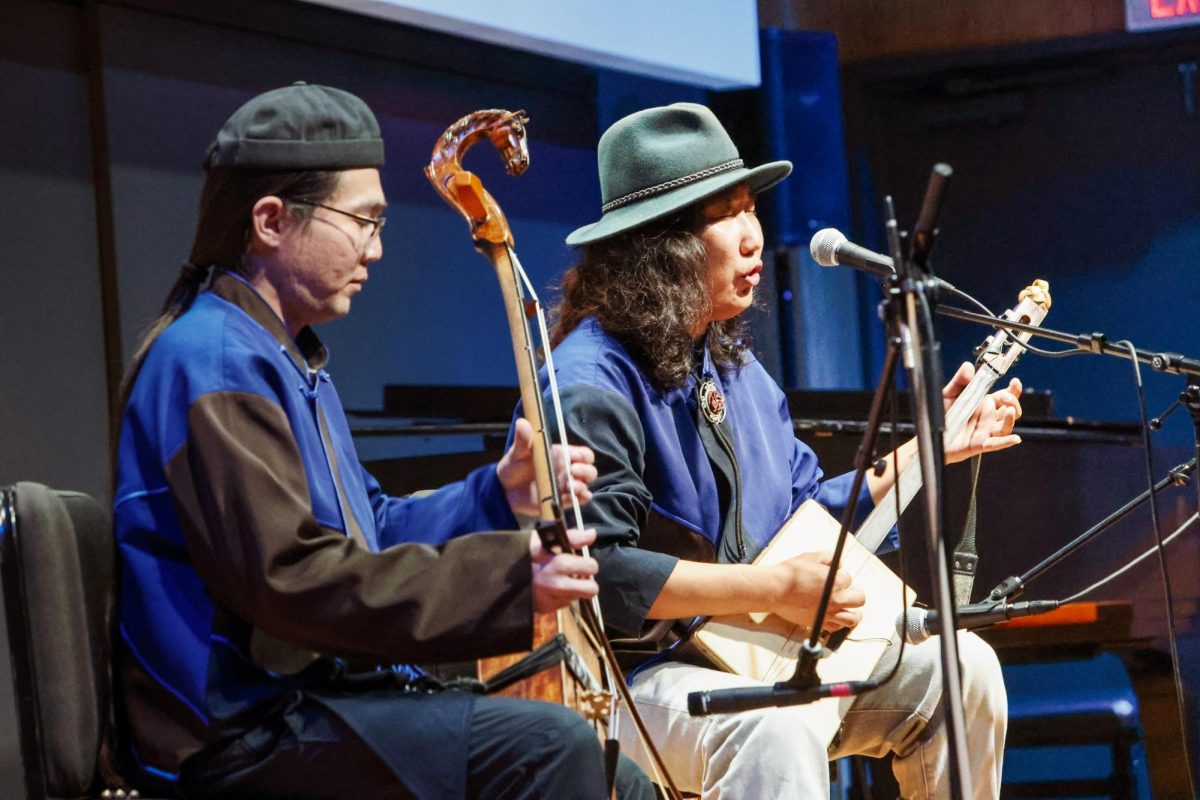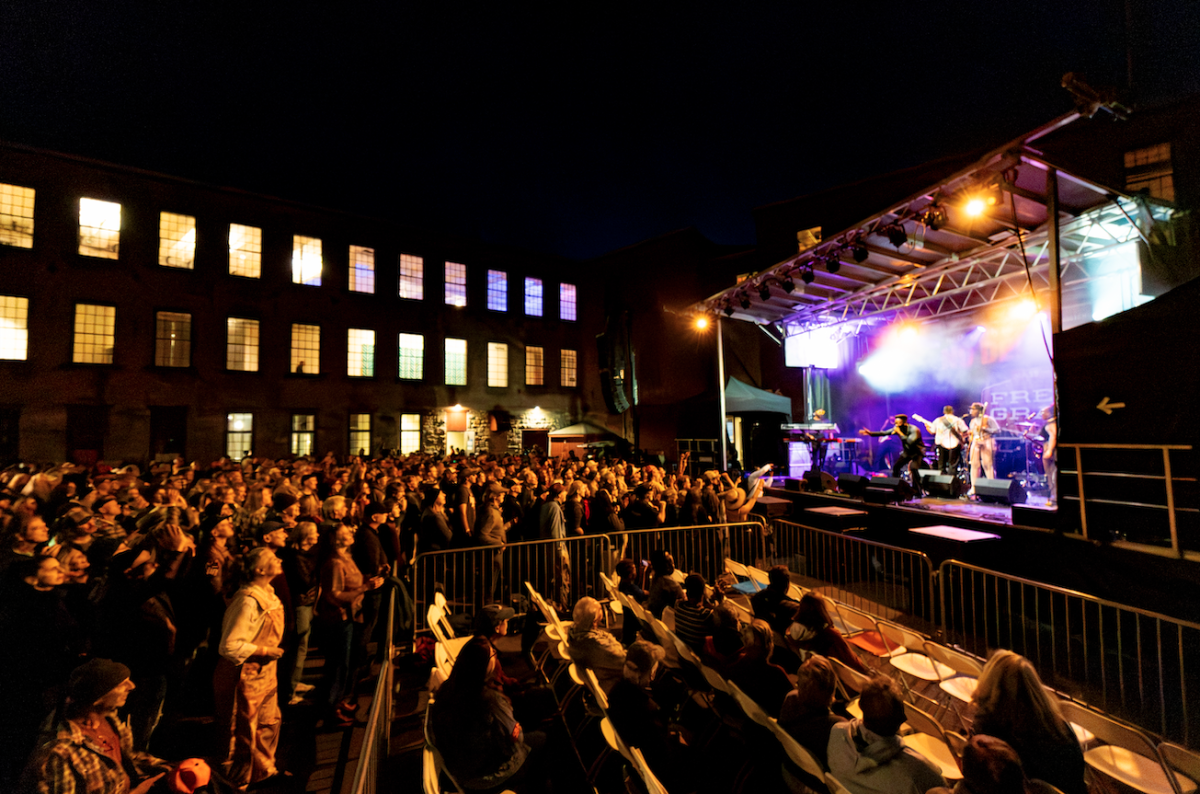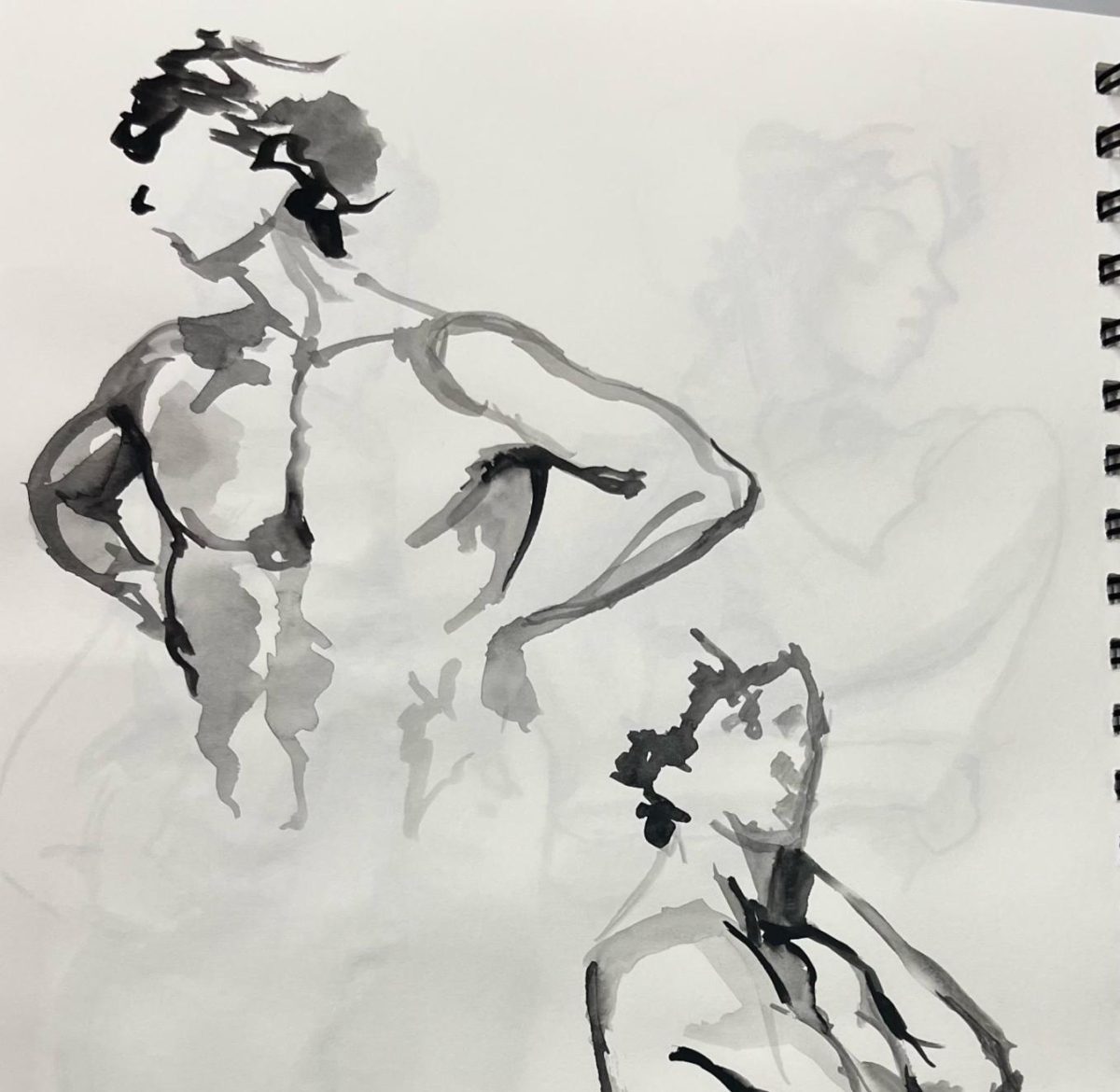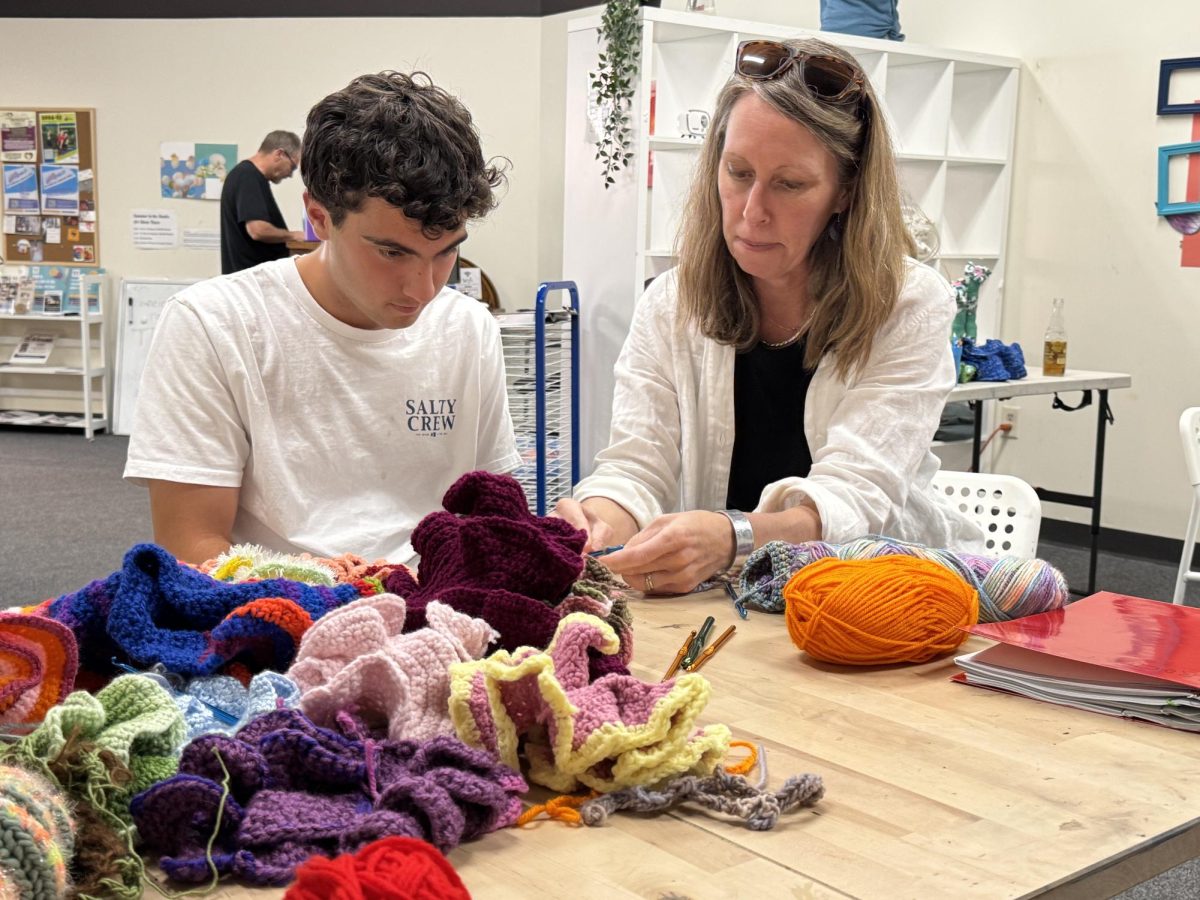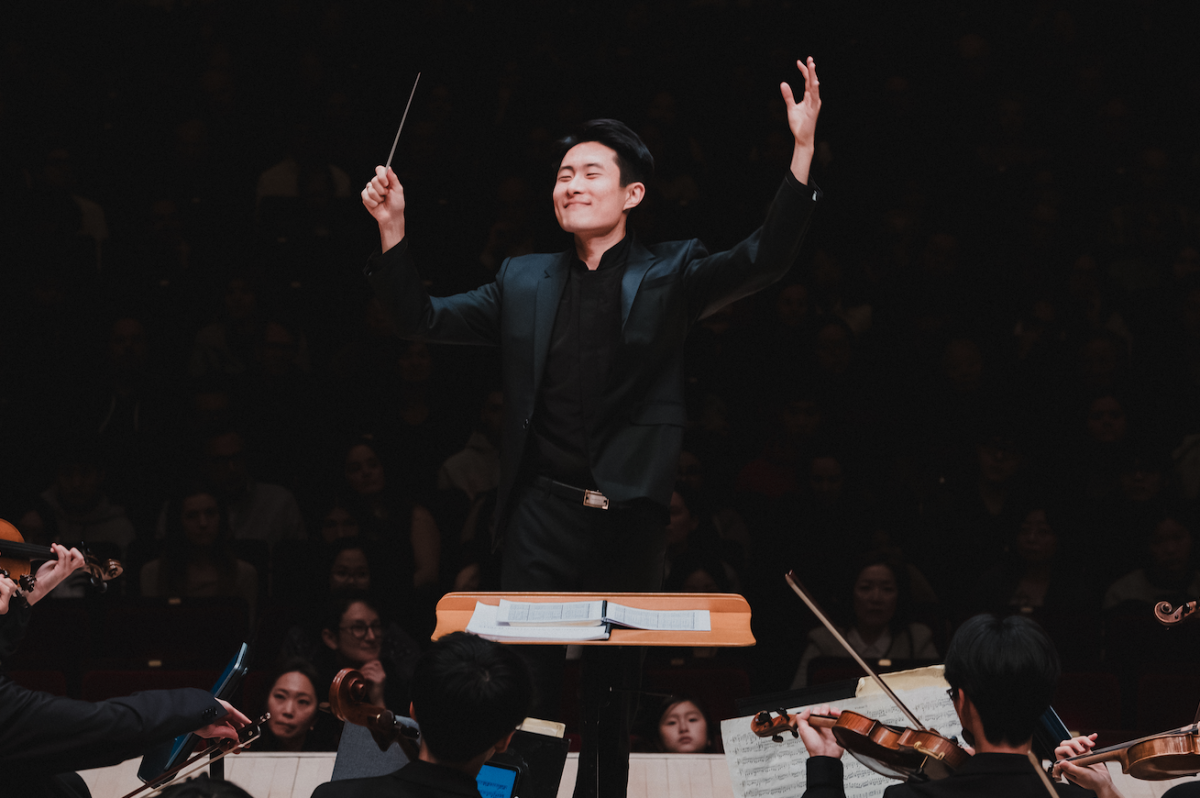
Horace Ballard is the curator of American Art at the Williams College Museum of Art (WCMA) and is the creator of the “Landmarks” exhibition.
Michael Gibson-Prugh (MGP): Hi, Horace — let’s get right into it. What drew you to the College over other museums or institutions?
Horace Ballard (HB): Oh, that’s a wonderful question. I had worked at RISD [Rhode Island School of Design] and the Bell Gallery at Brown, and I worked at the Yale Art Gallery. I really enjoy teaching museums and I’m fascinated by the ways their collections were built. I’m fascinated by a mission that we have at WCMA, which is truly the mission that drew me here, that said, we make innovative moments happen for this campus community, for the region, for the world. It means that when we want to buy a work of art or when a work of art is asked to go on loan or when we’re thinking about a program that we can collaborate on in-house, we always go back to the idea of what’s new, what’s innovative. At WCMA … if we can’t formulate a great question and refine that question, then somebody else must’ve already done that show, right? We think it’s such a great show when it becomes an open question that students, faculty and the region can help us refine and digest. I love that, that we build great things around questions.
MGP: So on that topic, with the “Landmarks” exhibition, what do you think that question is?
HB: The question at the heart of “Landmarks” is, what is a landscape and what is the stake of a landscape photograph in the postmodern moment when the world around us is rapidly changing and we’re losing space day by day? And photography is a highly modern invention in the way that we know it — it started in 1839, and it was so modern that one could argue that the photograph and all of its variants, including moving images and then what we know as cinema and film today, trained generations of human beings how to see the world. So, the question is, if we ask ourselves, what is a landscape? I think the next question is, so what does a landscape now do as a modern invention in the postmodern moment? And how has the College collected landscape photography and where are the gaps? Where should we continue to collect?
When you walk into the exhibition, there’s the intro text on the wall, laying all these things out, and then, even before you see the art, you see that we have been purposeful about a land acknowledgment moment. Collections are built in a hodgepodge and a myriad of ways — some gifts, some purchases, some requests, over centuries, as our collection has been. When you do that, it means that some voices get left out, and [the acknowledgement mentioned] “Here are some voices that get left out.”
So as you’re looking at the walls — we’re in a very high gallery for a reason — I wanted there to be a lot of white space around the images, both so you can get up to them and see but also so that you can reflect on what’s not there. We want all students to be a part of a broader conversation in the coming years. Where should we collect photographs from, and who is making those images of the built and natural environment that really speak to our own time?
MGP: That leads into my next question. Were any pieces specifically acquired for this exhibition?
HB: There weren’t any works that were specifically acquired for this exhibition, but there are works that I was delighted that the timing of them coming into the collection would allow them to be in the exhibition. And one of them is the image on the banner of the building, the Daniel Kukla. Daniel has two works that are in WALLS [Williams Art Loan for Living Spaces]. He came last spring to meet with some of those students and he got permission to go into the dorms and spend the days with those students. He makes incredible landscape photographs that are deeply honest about them being a bit of a fabrication, something that’s deeply, deeply prescribed to draw attention to the fact that a landscape is invented, the world doesn’t end, you know? And because of that honesty but also that rigor, we have two of Daniel’s works in WALLS and they’re always some of the top 10 works every year, so it’s time to bring him into the collection. It’s time to say to those students and the artist that Daniel has a more permanent home here. It was actually student interest in his work that was driving my thinking, but the fact that that could jive with this show was awesome.
MGP: The description of this exhibition discusses war and mass incarceration and climate change, and some of these are older photographs and some are newer, so what continuities do you see with how these photographs show the world and connect on these issues?
HB: I found that the moment when societies are the most divided is the moment when societies are the most forgetful of history. It was so important to me to put some of these older works from the ’30s, ’40s and ’50s beside works made in the past 10 or 15 years, to show that human beings as they’ve thought about their relationship between themselves, societies and the earth have always been wondering about natural resources, have always been thinking about scarcity, have always been thinking about who, through socioeconomic or geopolitical discourses, has agency and access to certain things like riverbeds, like floodplains, like housing. These things are at the apex of crisis now, but they have been with us for decades, if not the 150 years since photography has been a medium. And how natural it is to want to document your life, and your friends, and your world and the spaces you inhabit. It is also a natural impulse to document these moments of crisis, and I thought that by doing that as a member of the College community, as a member of the Berkshires community, it just makes more deeply apparent the great gifts and beauty of our region and also how much work there is to do, and also how that work doesn’t always have to look a certain way.
Work can be in the incredibly thoughtful attention one gives to a place, and photography allows that kind of work to come through as activist or political acts. That idea that attention can be a political act is quite interesting to me as a curator because I always think about what is drawing my attention, what has the artist done, what choices have they made to compel my attention. So, the idea is that attention can be a really thoughtful, cultural, political act and the photograph is the natural extension of that. I think kind of the blurring across time and place allows for that to come through.
MGP: My last question is about an event with this exhibition. On Feb. 13, there is a talk with Clifton Granby called “Towards Ecological Community.” Could you speak a bit on what that is about?
HB: We just talked to Clifton earlier today about his talk and his thinking. One of the things I really wanted to do this semester was to see what it’s like to mount an exhibition and also teach with similar themes. In the grad program, we’re not just looking at photography but we’re looking at art for 400 years, sculpture, paintings, performance pieces. I was wondering, what are those moments, what are those themes that are deeply legible for the grad students and the theory they’re reading and also deeply legible for a public that is not in class with us but is really intrigued with questions about the show. And Clifton’s conversation on Feb. 13 is that moment.
Clifton Granby is a scholar at Yale Divinity School and the Yale School of Forestry. He thinks a lot about ideas of lament and what it means to give communities in the face of trauma. In particular, he thinks of eco-fragility and climate change as a trauma that is affecting developing countries more greatly than it is affecting Europe and the U.S. He talks about how to give space for lament, how to give space for clapback and talkback, how to give space for global evaluation and how to then, after a moment of deep hearing and resonating with each other, chart a uniquely communal path toward recovery. One of Clifton’s great points that he often lectures on at Yale is that there’s a reason why truth and reconciliation work has truth come first — you have to acknowledge pain and trauma before you can move on from it. You can’t build if there’s not a shared understanding of what went on. And his open question is, are we at a moment with climate change that is the critical moment? Because there is still time for realization and progress, and there is still time to make a positive difference — that’s the reconciliation part. So I think Clifton will be speaking from that angle and weaving it in and throughout, and then thinking about how artists lead the way, they make art about their lives and their world and that is a powerful way of recovery.




